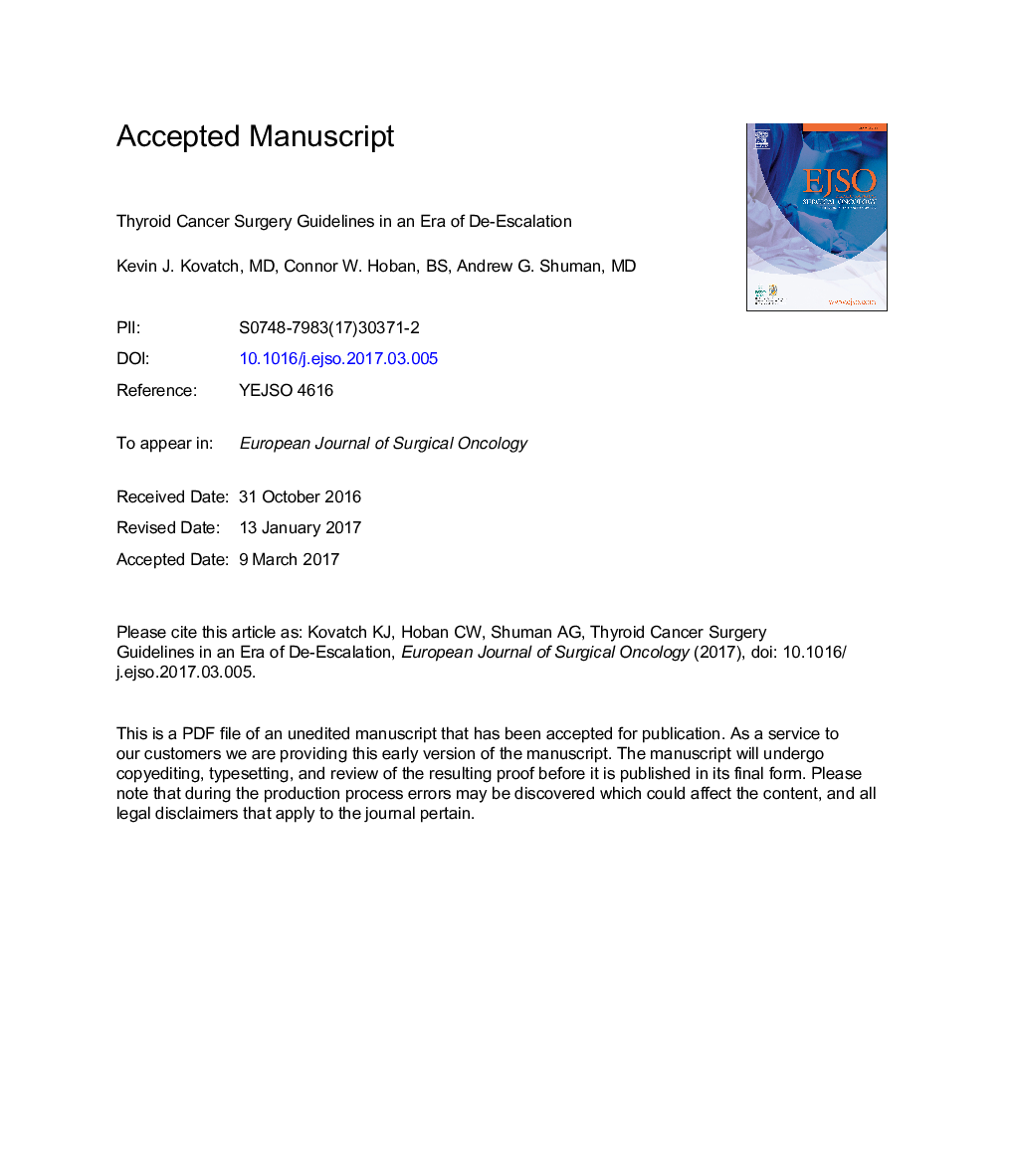| Article ID | Journal | Published Year | Pages | File Type |
|---|---|---|---|---|
| 8786903 | European Journal of Surgical Oncology (EJSO) | 2018 | 27 Pages |
Abstract
Well-differentiated thyroid carcinoma has seen a tremendous rise in global incidence over the past three decades, largely owing to widespread screening and identification of small, incidentally detected tumors. With this increased incidence has emerged a movement questioning whether all cases of thyroid cancer merit a treatment approach focused on oncologic completeness. Such trends towards thoughtful, evidence-based treatment de-escalation paradigms reflect better risk stratification of thyroid cancers, and recognition that not all detected disease poses a threat to health or survival. Thus, national and professional guidelines are evolving to incorporate higher thresholds for surgery, acceptance of less than total thyroidectomy in specific circumstances, higher thresholds for adjuvant therapy, and introduction of the role of active surveillance for selected cases of low risk disease. Despite these common themes, there are significant differences among guidelines. This lack of consensus in guidelines persists due to variation in clinical practice patterns, differences in consideration and interpretation of existing evidence, cultural and geographical considerations, and resources available for both diagnosis and treatment.
Keywords
ktaAmerican College of EndocrinologyPTMCETAAACEDTCNIFTPNCCNATARAIACEAMEPTCAmerican Association of Clinical EndocrinologistsAmerican Thyroid AssociationDe-escalationBtAThyroidectomyWell-differentiated thyroid cancerNational Comprehensive Cancer NetworkPapillary thyroid microcarcinomaUnited KingdomPapillary thyroid carcinomaGuidelinesRadioactive iodine
Related Topics
Health Sciences
Medicine and Dentistry
Oncology
Authors
K.J. Kovatch, C.W. Hoban, A.G. Shuman,
